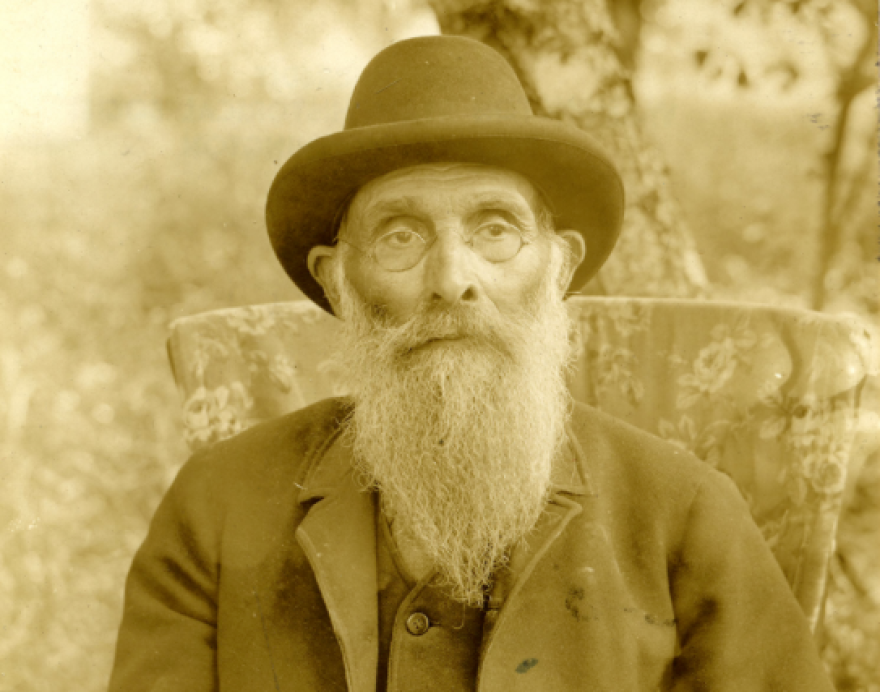Washington’s sprawling Capitol campus features war memorials, a granite monument to fallen police officers, a replica of a Roman-style fountain and a brass sundial.
But as soon as this summer a new monument will join the collection. It will honor George Bush, Washington’s first Black pioneer, along with his son, William Owen Bush, who was the state’s first Black lawmaker, and their family.
Washington’s Department of Enterprise Services (DES), which oversees the Capitol Campus, announced the planned monument on Tuesday. The project is a collaboration between DES and the Washington State Historical Society (WSHS).
“This is a great step forward in recognizing and celebrating the diversity and spirit that shaped Washington,” said Chris Liu, DES director, in a statement.
Bush, who was biracial, helped lead an expedition of white families that left Missouri in 1844 and headed west along the Oregon Trail. At the time, Missouri – a slave state – was forcing free Black people like Bush to leave. Initially, Bush and his fellow pioneers – known as the Bush-Simmons party -- intended to settle in present-day Oregon. But once they arrived, they learned that while slavery had been banned in the Oregon territory, the provisional government had also passed Black exclusionary laws.
“The party decided it would not settle in a place where Bush and his family weren't welcome, so they traveled north of the Columbia River hoping to move beyond the reach of the area's racist laws,” according to a history included in the announcement of the new monument.
In 1845, the group instead settled along the Deschutes River in what is now Tumwater, Washington. There, Bush and his wife Isabella, who was white, began farming on what became known as Bush Prairie.
“The Bush family found success and prosperity in their new home. They worked the land as farmers and raised award-winning wheat, traded with local Indigenous people, built [a] sawmill and began a small logging operation,” according to a DES online history.
That same historical account says the Bush family generously gave away food during a famine in 1852 -- likely saving the lives of other settlers.
The Bushes and their fellow Oregon Trail companions were the first non-Indigenous people to lay claim to lands in what is today the Tumwater area, more than 40 years before Washington statehood.
But for a decade, Bush’s claim to his land was threatened because he was Black. It wasn’t until 1855, after the Washington territory was established, that Bush finally won title to the 640 acres he had homesteaded. It required a petition on the part of the Territorial Legislature and an act of Congress.

Bush died in 1863 at the age of 73. Over the decades, he’s been conflated with another Black pioneer, George Washington, who has been credited as a founder of Centralia in Lewis County.
In 1889, Washington won statehood and Bush’s oldest son William, who went by his middle name Owen, became a member of the inaugural state Legislature. He was instrumental in helping to found Washington State University.

The monument on the Capitol campus will honor both father and son, while also paying tribute to Isabella and the Bush family generally, according to Julianna Verboort with the state historical society.
The project is moving forward with guidance from an advisory committee.
“We can always talk about George Bush and lift him in our conversations, but to have him and his family recognized at the state level in this way is huge,” said advisory committee member Stephanie Johnson-Toliver, president of the Black Heritage Society of Washington State, in a statement.
The monument – a bronze plaque mounted on a 30 inch tall granite pedestal -- will be located near the Capitol Campus’ World War II monument. It will also be in view of a butternut tree planted in 2010 that began as a sapling from a nut from a 170-year-old tree that still stands on Bush Prairie in Tumwater. That tree originated from root stock that Bush brought with him from Missouri.

The plaque will read in part:
“Black pioneer George Bush (c.1790-1863) helped establish the first non-Indigenous American settlement in Washington. George, his wife Isabella and others traveled the Oregon Trail to escape discrimination and prejudice in Missouri, only to arrive in the Oregon Country to find that newly adopted racist laws prohibited Black settlers. Continuing north of the Columbia River, they established a farm called Bush Prairie near today’s Tumwater.”
The monument will be funded through an appropriation made by the state Legislature last year to celebrate Black history in Washington. According to DES, installation of the monument could happen as early as this summer, although supply chain issues with the granite could delay the project.


